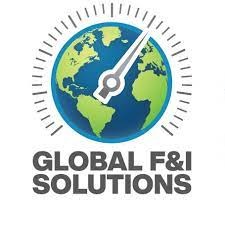
Understanding the Impact of Tariffs on Automotive Repair Costs
As tariffs loom over the automotive sector, dealership operations face a pressing challenge: rising service costs. With nearly half of essential OEM parts sourced internationally, repair budgets are set to be squeezed harder than ever. A recent analysis highlights that tariffs could potentially inflate the cost of repairs by an average of $100 per job, affecting everything from labor to parts pricing. For dealerships, proactive strategies will be crucial to retaining customer trust and managing budgets effectively.
Maximizing Revenue with Targeted Customer Outreach
For dealerships looking to shield their revenue from the impending storm of price increases, strategic customer outreach is vital. One key approach involves revisiting jobs previously declined by customers, especially as urgent repairs become more cost-sensitive. By leveraging tools like Multi-Point Inspection (MPI) software, dealerships can identify and communicate with customers about needed services that they may have postponed. This proactive approach allows dealers to secure revenue before costs rise significantly, potentially safeguarding their bottom line.
Utilizing Technology to Enhance Service Efficiency
Modern dealerships have a plethora of technological tools at their disposal to streamline operations and enhance customer interactions. Solutions like Xtime and other service management software enable dealerships to prioritize job allocations based on urgency rather than merely filling appointment slots. As pricing pressure mounts, optimizing service delivery through technology can transform the customer experience, ensuring that dealers can manage increased demand without compromising service quality.
Preparing for Future Economic Challenges
While the immediate effects of tariffs are evident, dealers should also prepare for future economic challenges. Understanding market trends and parts availability will be essential for strategic planning. Continuous education on evolving tariffs and their implications can empower dealership staff to navigate fluctuations confidently. In addition, offering financing options like tailored used car loans can also enhance customer satisfaction during uncertain times. With the right preparations and tools, dealerships can adapt to changing economic landscapes and maintain solid growth.
Potential Customer Reaction to Rising Services Costs
Consumers generally react cautiously to rising service costs, particularly in a market where financial options are being tested through various car financing models. Many customers will be seeking ways to manage their car-related expenses effectively, including refinancing existing loans or adjusting their service choices. Dealerships that provide clear communication about the reasons behind rising costs, paired with financing solutions, can mitigate negative customer reactions and foster long-term loyalty.
Take Action Now to Secure Future Success
In summary, with tariffs poised to impact service costs dramatically, dealerships have an unprecedented opportunity to prepare and act now. Engaging past customers, utilizing technology for service efficiency, and planning for future economic shifts will not only preserve profitability but also improve customer loyalty. By taking these proactive steps, dealerships can navigate the looming challenges and emerge stronger in an evolving marketplace.
 Add Row
Add Row  Add
Add 




Write A Comment